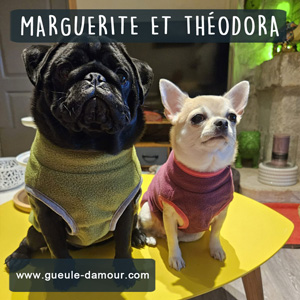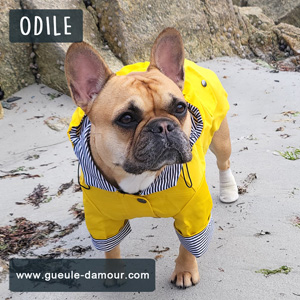While wearing fur shocks many people, leather is often seen as a natural material, associated with ideas of quality and durability. But the leather industry, like the fur industry, is the cause of great animal suffering. It is also harmful to the environment and to human health. Today we list 5 reasons not to buy leather.
1 - For animals
Animals are the first to be affected by the leather industry, because it is their skin that we are talking about. It is often thought that leather is a by-product of the meat industry: it would then make it possible to “recycle” the skin of animals that are killed to be eaten. The reality is not so simple: it is not a by-product, but the most important “co-product” of the meat industry . For some animals, such as ostriches, leather is much more lucrative than meat: it is therefore the latter that becomes a by-product of leather. It can also be a very distinct sector : the animals in question are then raised only for their skin.
In any case, buying leather means supporting intensive animal husbandry practices. Much of the leather comes from developing countries like India or China, where animal protection laws are either non-existent or unenforced. Slaughtering practices are particularly violent there and cause terrible suffering to animals raised for their meat or leather. Most animals are victims of confinement, deprivation, castration and abuse.
Each year, 1 billion animals are raised and killed for their skins . Cows, pigs, goats, sheep, or even dogs and cats: many species are affected. China is the world's largest exporter of leather. The manufacture of dog or cat leather is common there. These products are then sold without specifying which animal the leather comes from and can be bought by consumers in complete ignorance.
2 – For the environment
Intensive animal husbandry, meat and leather combined, is responsible for 18% of greenhouse gas emissions , more than the global transport sector. It also causes deforestation: after a 3-year investigation, published in 2009, Greenpeace claims that cattle farming is responsible for 80% of the destruction of the Amazon rainforest in Brazil. On an industrial scale, farming consumes a lot of water and leads to the pollution of the latter as well as the soil, by rejecting manure, antibiotics, hormones, chemicals but also fertilizers and pesticides in nature. The resources used by animal husbandry to obtain 1 kg of leather can have an environmental impact 20 times greater than those required to produce 1 kg of synthetic materials such as polyester.
The leather tanning process is extremely polluting : the toxic waste resulting from this treatment is discharged into rivers and pollutes groundwater, causing serious illnesses among the inhabitants of regions where there are many tanneries, such as the Hazaribagh district. in Dhaka, the capital of Bangladesh . The pollution of the Buriganga River, crossing the city of Dhaka, bears witness to this: following the toxic waste dumped daily into the water by the tanneries, the life of fish and plants is made impossible there. Water pollution affects the health of local residents and workers every day.
3 – For the conditions of the workers
Leather tanning is a process of making an animal's skin rot-proof and water-resistant. It most often requires chemicals that are toxic to the health of workers and people living near tanneries.
Worldwide, more than 80% of leather is tanned using chromium, a product that is dangerous to the health of employees. The NGO Pure Earth estimates that 16 million people are exposed to the dangers of chromium worldwide , and that 3 million people could be affected by diseases resulting from this exposure. This chemical agent can in particular cause skin diseases and respiratory ailments. Numerous studies have demonstrated the link between sinus and lung cancers and chromium used in tanning.
In developing countries where leather tanning is widely practised, most tanneries do not provide protective equipment or proper training to work with toxic chemicals to their employees. In these tanneries, where no health standards are respected, the life expectancy of workers does not exceed 50 years.
In Hazaribagh, the tannery district of Dahka, 50 tons of chemicals are used every day to prepare the tanning of the skins. The inhabitants and workers live in the midst of these toxic products, in an environment saturated with chromium, mercury or arsenic. When the monsoon rains run off, the mixture floods the neighborhood and spills into the river, putting residents in mortal danger. Hazaribagh is now considered the most contaminated place on the planet . This video tells the daily life of Indian tanners. They are the ones who make the leather used in most of the shoes sold in Europe.
4 – For more sustainable purchases
Leather being associated with quality, it sells: demand is very high today, which pushes manufacturers to produce more and less expensively. The quality of leather found in low and mid-range stores today is mediocre . Alternatives similar to leather exist, having superior quality and resistance.
The chemical compounds used during tanning do not disappear on their own. Trivalent chromium, used during tanning, can turn into hexavalent chromium during the process. It is an allergenic substance, which can cause itching or even eczema. Worrying amounts of hexavalent chromium are routinely detected in commercial leather goods. According to a survey conducted by France 5, 30% of leather shoes sold in France contain hexavalent chromium . Low-end models would usually have significant amounts. Some tanneries take care to respect a low rate of hexavalent chromium in their production to ensure their non-toxicity, but they are however rare. Most of the leather contained in the shoes sold in France comes from Asia, where the regulations are insufficient.
5 – To become a consum'actor
Each of our daily actions has an impact on the world around us. Choosing not to buy products whose values do not correspond to us is to stop endorsing harmful practices. It is often said that the most effective vote is the one made with your wallet . As Coluche said: “ When you think that it would be enough for people to stop buying them for them to stop selling” .
It is now possible to opt for alternatives similar to leather in all its aspects, which respect animals, the environment and workers. The quality and durability of these materials is similar to that of leather. Choose to buy products without leather, designed with respect, it is to support caring practices for animals and the planet, and to say no to a harmful industry that causes suffering and pollution .
Do not hesitate to share it to convince your entourage!




























